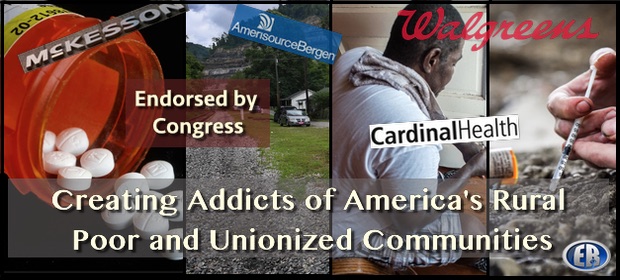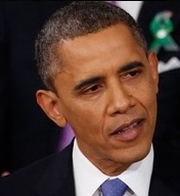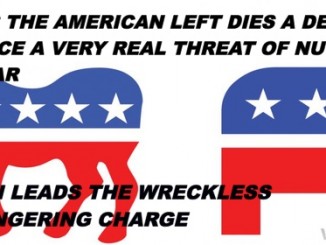
ER Editor: As with all articles from WSWS (World Socialist Website), we admire the quality of their analysis but do not endorse any kind of international socialism.
We also recommend this piece by WSWS from November 2013 titled Oxyana highlights prescription drug epidemic in Appalachia, and this from WSWS in 2011, Kentucky drug overdose deaths soar.
********
How the pharmaceutical companies, Congress and the DEA made the opioid epidemic a billion-dollar industry
GENEVIEVE LEIGH
Previously undisclosed information from the Drug Enforcement Administration (DEA), published last week, traces the path of every narcotic sold in America—from manufacturer to distributor—between 2006 and 2012. The information, analyzed in a comprehensive report by the Washington Post (ER: paywall alert), casts additional light on the massive, profit-driven spread of opioids, abetted by the entire political establishment.
During the six-year period, drug manufacturers and distributors flooded the country with 76 billion prescription pain pills, fueling an opioid epidemic that now kills 50,000 people a year in the US.
Multibillion-dollar drug distributors such as McKesson Corp, Walgreens, Cardinal Health and  AmerisourceBergen targeted in particular one of the poorest regions in the country, Appalachia, saturating former coal mining centers in Kentucky, Virginia, West Virginia and Tennessee.
AmerisourceBergen targeted in particular one of the poorest regions in the country, Appalachia, saturating former coal mining centers in Kentucky, Virginia, West Virginia and Tennessee.
Norton, a small town of less than 4,000 residents in the southwest corner of Virginia, received 8,263,510 prescription pain pills, enough for 305 pills per person per year. One Walmart in the city alone received more than 3.5 million of the opioid pills.
In Mingo County, West Virginia, an economically depressed former coal mining county with a 29 percent poverty rate, 29,548,720 pills were flooded into the city, enough to provide each person with 203.5 pills a year. A pharmacy in Kermit, West Virginia, a town of just 392 people, ordered nine million hydrocodone pills in a two-year span.
The counties that had the most pills per person experienced more than three times the death rate from opioid overdose than the rest of the country. Thirteen of those counties had an opioid death rate more than eight times the national rate, and seven of them were in West Virginia alone.
In Norton, the per capita death rate from prescription opioid overdoses was 18 times the national average.
According to the analysis by the Post, the volume of pills distributed by the drug companies kept pace with the growing opioid epidemic, increasing 51 percent, from 8.4 billion in 2006 to 12.6 billion in 2012. The companies responded to the deadly opioid epidemic, fully aware that it was killing thousands of people a year, by pumping more pills into the hardest-hit regions, above all Appalachia.
During this period, opioid manufacturers spent $11,676 on marketing per every thousand residents living in the region.
 The targeting of Appalachia has a particularly criminal character. The region was once the center of the coal industry, and its miners were among the most militant sections of the working class. In 1921, in what became known as the Battle of Blair Mountain, some 10,000 armed miners set out to free fellow miners who had been imprisoned in Mingo County under a martial law decree. The miners were eventually dispersed by means of an aerial bombardment by the US Air Force.
The targeting of Appalachia has a particularly criminal character. The region was once the center of the coal industry, and its miners were among the most militant sections of the working class. In 1921, in what became known as the Battle of Blair Mountain, some 10,000 armed miners set out to free fellow miners who had been imprisoned in Mingo County under a martial law decree. The miners were eventually dispersed by means of an aerial bombardment by the US Air Force.
The militancy of miners continued into the 1960s and 1970s, including a mass strike in 1969 to force the passage of federal regulations recognizing black lung as an occupational illness and limiting exposure to coal dust, and a 111-day strike in 1977-1978 in defiance of United Mine Workers (UMW) President Arnold Miller and a Taft Hartley back-to-work order by President Jimmy Carter.
In the 1980s, the ruling class carried out a decade of union-busting and mass layoffs, abetted by the UMW under Richard Trumka, now president of the AFL-CIO, who isolated and betrayed a series of strikes and helped impose massive cuts in jobs, wages, benefits and safety conditions. This culminated in the betrayal and defeat of the 1989 Pittston strike in West Virginia, Virginia and Kentucky.
The unions and the Democratic Party oversaw the social devastation of the region. By the beginning of the current century, one-third of the 100 poorest counties in the United States were concentrated in the coalfields.
Capitalism, having profited from plunging the region into economic depression, found a way to profit once again by exploiting the social misery it had produced to addict the population on deadly drugs. Pharmaceutical corporations pumped towns full of opioids and took in billions of dollars.
Leaked email exchanges between drug manufacturers and distributors give a sense of the character of this operation and those who orchestrated it. In January 2009, Victor Borelli, a national account manager for drug maker Mallinckrodt, sent an email to Steve Cochrane, the vice president of sales for KeySource Medical, informing him that 1,200 bottles of oxycodone 30 mg tablets had been shipped.
“Keep ’em comin’!” Cochrane responded. “Flyin’ out of there. It’s like people are addicted to these things or something. Oh, wait, people are…”
Borelli replied: “Just like Doritos keep eating. We’ll make more.”
There is a sociopathic character to such comments, which express a horrific disregard for human life. However, it is a sociopathology rooted in a social system. The flooding of economically depressed areas with billions of opioids for years on end, amidst a national health crisis and despite multiple levels of government oversight, is not the product of “crony” capitalism or “corrupted” capitalism, as Democratic presidential candidates Bernie Sanders and Elizabeth Warren like to proclaim. It is, rather, an expression of the brutally exploitative nature of the system itself.
As far back as 1916 Lenin identified the integration of gigantic corporations into the machinery of the state as “state-monopoly capitalism,” the characteristic form of capitalist rule in the epoch of imperialism. This process was still in its infancy when Lenin analyzed it. It has since metastasized many times over.
The Republicans and the Democrats are both culpable in a massive social crime against the population of the country.
So incestuous are the relations between the corporations and the state that in 2016, a unanimous House of Representatives and a unanimous Senate, at the height of the Opioid epidemic, quietly passed a bill, the main purpose of which was to stop the DEA’s Office of Diversion Control from halting drug shipments for unusually large and unexplained sales.
The bill, which was brought to the floor by Republican Tom Marino, was written by Linden Barber  (pictured), a former DEA employee, who left his job as associate chief counsel of the DEA and within a month joined a law firm that lobbies Congress on behalf of drug companies. He can be seen in TV advertisements touting his skills to potential drug distribution clients facing DEA scrutiny. During this period, the pharmaceutical industry and law firms that represent them hired at least 46 investigators, attorneys and supervisors directly out of the DEA.
(pictured), a former DEA employee, who left his job as associate chief counsel of the DEA and within a month joined a law firm that lobbies Congress on behalf of drug companies. He can be seen in TV advertisements touting his skills to potential drug distribution clients facing DEA scrutiny. During this period, the pharmaceutical industry and law firms that represent them hired at least 46 investigators, attorneys and supervisors directly out of the DEA.
Before passing the bill, Congress heard testimony from dozens of experts, including the then-head of the Office of Diversion Control for the Drug Enforcement Administration, who was subsequently pushed out of his position for his opposition to the rubber-stamping of the man-made epidemic.
The bill was signed into law by then-President Barack Obama, without the usual photo-op or press coverage.
 The multibillion-dollar pharmaceutical companies will not be stopped by the bourgeois courts. Their owners must be expropriated, and the companies transformed into publicly owned utilities as part of a planned, internationally coordinated socialist medical system based on providing quality health care for all rather than generating profits for billionaire capitalists.
The multibillion-dollar pharmaceutical companies will not be stopped by the bourgeois courts. Their owners must be expropriated, and the companies transformed into publicly owned utilities as part of a planned, internationally coordinated socialist medical system based on providing quality health care for all rather than generating profits for billionaire capitalists.
All of the social evils associated with addiction—unemployment, poverty, lack of education—can be eliminated only through a struggle to mobilize the working class against the entire political system, both parties of big business and all of their bribed politicians. To end drug addiction and stop the billionaire drug pushers, it is necessary to put an end to capitalism.
************
Original article

••••
The Liberty Beacon Project is now expanding at a near exponential rate, and for this we are grateful and excited! But we must also be practical. For 7 years we have not asked for any donations, and have built this project with our own funds as we grew. We are now experiencing ever increasing growing pains due to the large number of websites and projects we represent. So we have just installed donation buttons on our websites and ask that you consider this when you visit them. Nothing is too small. We thank you for all your support and your considerations … (TLB)
••••
Comment Policy: As a privately owned web site, we reserve the right to remove comments that contain spam, advertising, vulgarity, threats of violence, racism, or personal/abusive attacks on other users. This also applies to trolling, the use of more than one alias, or just intentional mischief. Enforcement of this policy is at the discretion of this websites administrators. Repeat offenders may be blocked or permanently banned without prior warning.
••••
Disclaimer: TLB websites contain copyrighted material the use of which has not always been specifically authorized by the copyright owner. We are making such material available to our readers under the provisions of “fair use” in an effort to advance a better understanding of political, health, economic and social issues. The material on this site is distributed without profit to those who have expressed a prior interest in receiving it for research and educational purposes. If you wish to use copyrighted material for purposes other than “fair use” you must request permission from the copyright owner.
••••
Disclaimer: The information and opinions shared are for informational purposes only including, but not limited to, text, graphics, images and other material are not intended as medical advice or instruction. Nothing mentioned is intended to be a substitute for professional medical advice, diagnosis or treatment.




